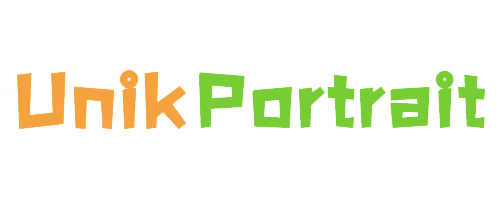In our previous discussion, we explored the basic differences between labels and stickers. Now, let's delve deeper into the specifics of UV transfer labels and UV DTF transfer stickers offered by UnikPortrait, focusing particularly on how they handle font size and detail.
Font Size Capabilities:
UV Transfer Label: Utilizing a sophisticated screen printing technology, UV transfer labels excel at capturing even the tiniest details. This capability makes them exceptionally suitable for applications that require fine text, such as ingredient lists or warning labels. The precision of screen printing ensures that even the smallest fonts remain legible, making these labels highly versatile and reliable for critical information.
UV DTF Transfer Sticker: On the other hand, UV DTF transfer stickers employ a different approach, using a UV printing technique to apply ink directly onto a transparent, thin film. This method is celebrated for producing stickers with rich, vibrant colors and complex designs. However, it's important to note that this technique is less suited for designs that are heavy in text. When using UV DTF transfer stickers, it's advisable to keep the font size to a minimum of 2mm in height to ensure clarity and legibility post-transfer.

Color:
UV Transfer Label: Leveraging screen printing technology, UV transfer labels are capable of producing vibrant and bright colors. This method is particularly effective for designs that require solid and simple colors, such as logos or text. Additionally, UnikPortrait offers the option to incorporate glitter powder into the ink, providing a stunning metallic effect in gold or silver. However, it's important to note that screen printing has its limitations; it struggles with gradient colors and can become complex when multiple colors are involved in a single design.
UV DTF Transfer Sticker: In contrast, UV DTF transfer stickers excel in handling a wide range of colors, including gradients and large blocks of color. This capability is akin to digital printing, making these stickers ideal for colorful and intricate designs, such as detailed patterns or bitmap images. The flexibility in color handling allows for the reproduction of virtually any color present in the original design, ensuring a faithful and vibrant translation from digital to physical form.

Application:
UV Transfer Label: The robust nature of screen printing technology used in UV transfer labels allows them to adhere to almost any surface, provided it is not excessively soft or rough. This makes them incredibly versatile and suitable for a variety of applications, from candle jars and washing bottles to packaging boxes. The durability and adherence quality of these labels make them a reliable choice for both commercial and personal use.
DTF Transfer Sticker: Similarly, DTF stickers are versatile in terms of application surfaces. However, they differ in the type of adhesive used on the backing paper. This specific adhesive might cause damage to paper-like surfaces when the film is removed. Therefore, while DTF stickers can be applied to many of the same surfaces as UV labels, extra caution is advised when using them on delicate materials like paper, where they might tear the surface upon removal.

Choosing Between UV Transfer Labels and UV DTF Transfer Stickers When Both Fit Your Design:
When your design criteria meet the standards for both UV transfer labels and UV DTF transfer stickers, making a decision might seem daunting. Here are a couple of factors to help guide your choice:
Price: UV DTF transfer stickers generally offer a more cost-effective solution with a lower minimum order quantity (MOQ). This makes them an excellent option for those who are experimenting with new designs or do not require large volumes. If budget and quantity flexibility are your primary concerns, DTF stickers might be the way to go.
Accuracy: If your priority is achieving the highest fidelity in color reproduction and detail, then UV transfer labels are the superior choice. The screen printing technology used in these labels ensures precise color matching and clarity, making them ideal for designs that demand a visually stunning presentation.

Conclusion:
Both UV transfer labels and UV DTF transfer stickers have their unique advantages, depending on what your specific needs are. Whether it's price sensitivity and flexibility with UV DTF stickers, or color and detail accuracy with UV transfer labels, UnikPortrait has the right solution for your design requirements. If you're still unsure which option best suits your needs, or if you have any other questions, feel free to reach out to us at support@unikportrait.com. We're here to help you make the best choice for your project.
